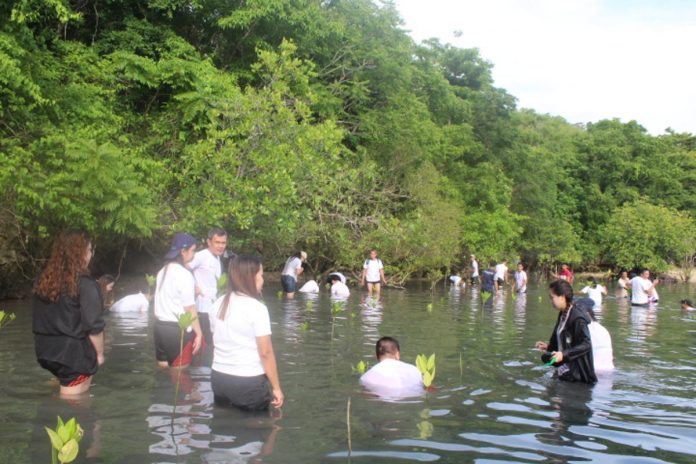
GUIMARAS – One with the campaign to protect coastal areas in the island province of Guimaras, the Guimaras Provincial Statistical Office planted mangrove propagules at the Taklong Island National Marine Reserve.
The activity was part of the simultaneous tree planting held in celebration of the 10th anniversary of the Philippine Statistics Authority (PSA).
“Each PSA Guimaras staff is required to plant not less than 10 mangrove seedlings under the supervision of the Department of Environment and Natural Resources (DENR)-Gumaras personnel Jhonnys Entrina Gange,” Provincial Statistics Officer Nelida B. Losare said.
Gange conducted a briefing about the dos and don’ts of planting mangroves to ensure their high survival rate.
“This mangrove species, we call it Bakhaw (Rhizophora stylosa), and we chose the Bato variety because this is the best-suited mangrove to be planted in this area,” Gange said.
Bakhaws grow to around four to 20 meters with medium-sized leaves, easily distinguishable by their exposed root system and long, slender, pointed propagules.
“These can be planted in inland mangrove areas, riverine or near-shore areas (at the mouth of rivers). They are ideal for planting in the deeper, central portions of reverted ponds with one to two feet of water at high tide,” Gange said.
He added that Bakhaw is ideal on mud or sandy mud and will grow in areas constantly submerged or on land regularly flooded by tides.
“Make sure the propagules are firmly in place, with six to eight inches buried in the mud but with the tips still above the water’s surface. Ideal for areas prone to erosion as the root systems are good soil catchers/buffers to tides. Can be planted in clusters, with propagules two to three meters apart,” Gange said.
He also reminded never to plant in seagrass beds because, although they may thrive there, these will eventually kill off the seagrasses and cause a further imbalance in the coastal ecosystem.
Meanwhile, Losare thanked the DENR for the provision of planting materials.
“We are thankful for the unwavering support of the DENR, especially for this mangrove planting activity. We are proud that we are one with their campaign in protecting coastal and protected areas on the island of Guimaras,” Losare said.
The government’s statistical authority celebrated its anniversary on June 25 with the theme “PSA@10: Providing Quality Services through Digital Transformation”. (With a report from Guimaras Provincial Statistical Office)/PN



